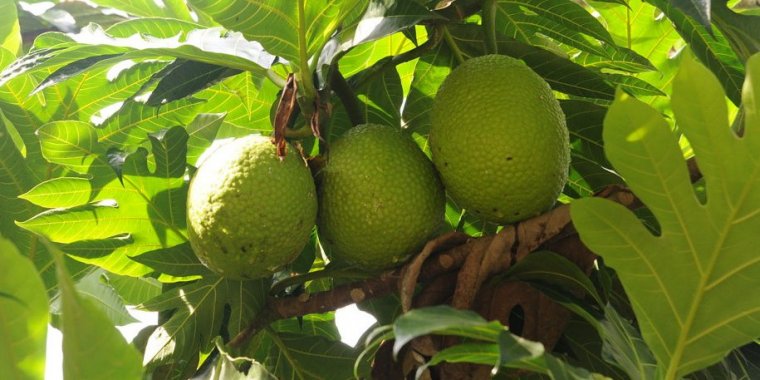| News / World News |
Climate-resilient breadfruit could boost food security
Breadfruit, which originated in the Pacific and is widely grown in South-East Asia, has a promising role in ensuring food security in tropical and subtropical regions of the world that are likely to be affected by climate change.

Breadfruit can be grown in regions where crops like corn and wheat are affected by climate change, according to scientists. Photo: MKwek
The study says that while climate change is likely to have adverse impacts on most crops, including staples such as corn and wheat, the resilient breadfruit will be relatively unaffected.
“As we implement strategies to adapt to climate change, breadfruit should be considered in food security adaptation approaches,” says climate scientist Daniel Horton, an author of the study and assistant professor at Northwestern University, US.
Breadfruit has been eaten boiled, roasted or mixed with other food for thousands of years. Its taste and versatility improve when flour processed from its starch is developed into other foods such as bread.
According to the Philippine Bureau of Agricultural Research, which explores the many uses of breadfruit, its nutritional profile is similar to that of wheat or potatoes but without the drawbacks to human health found in other carbohydrate-rich food.
Horton said that despite the word “fruit” being attached to its name, breadfruit is mainly cooked like potato. Closely related to jackfruit, it is high in fibre, vitamins and minerals, he said.
More than 200 varieties have been developed or evolved from the original breadfruit that originated in the Pacific islands and they include the “seedless” varieties commonly available in markets.
“Breadfruit is a neglected and underutilised species that happens to be relatively resilient in our climate change projections,” said Horton. “This is good news because several other staples that we rely on are not so resilient. In really hot conditions, some of those staple crops struggle and yields decrease.
“Breadfruit is particularly well-suited to growing in areas that experience high levels of food insecurity.”
Nyree Zerega, a conservation scientist with the Negaunee Institute for Plant Conservation Science and Action at the Chicago Botanic Garden, US, said: “Breadfruit trees can live for decades and provide a large number of fruits each year. In some cultures, there is a tradition of planting a breadfruit tree when a child is born to ensure the child will have food for the rest of his or her life.”
While breadfruit shows the most promising resilience to future climactic conditions within Asia, the study suggests opportunities to expand its cultivation over the next decades in Sub-Saharan Africa, where food insecurity happens to be high.
Christopher Umezuruike, scientific director of the Abia State Independent Electoral Commission (ABSIE) in Nigeria’s Umuahia region, told that a particular variety of breadfruit that grows in Africa, Treculiar africana, “has been found to be superior to others in terms of seed morphology, amino acid content, carbohydrates and quality of its seed oil”.
With the trees reaching heights of nine to 18 metres, the African breadfruit begins to bear fruit six years after planting and remains productive for more than 50 years.
“I have not studied its glycemic value but scientific opinion over here [Africa] is that it is good for diabetic patients,” Umezuruike said. (SciDev.Net)
YOU MAY ALSO LIKE





